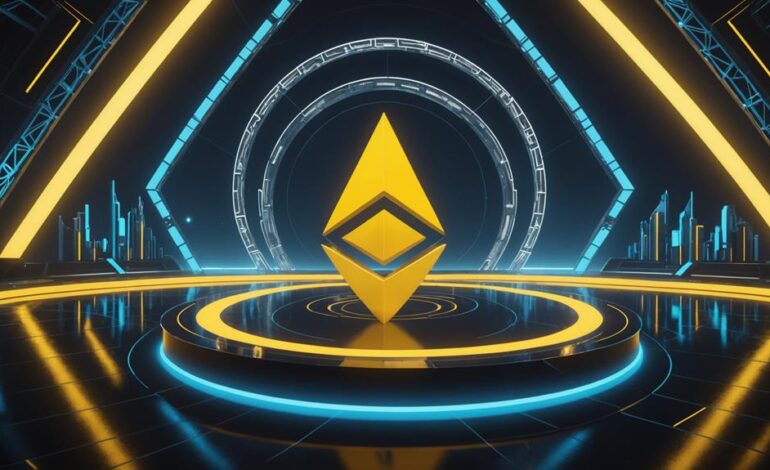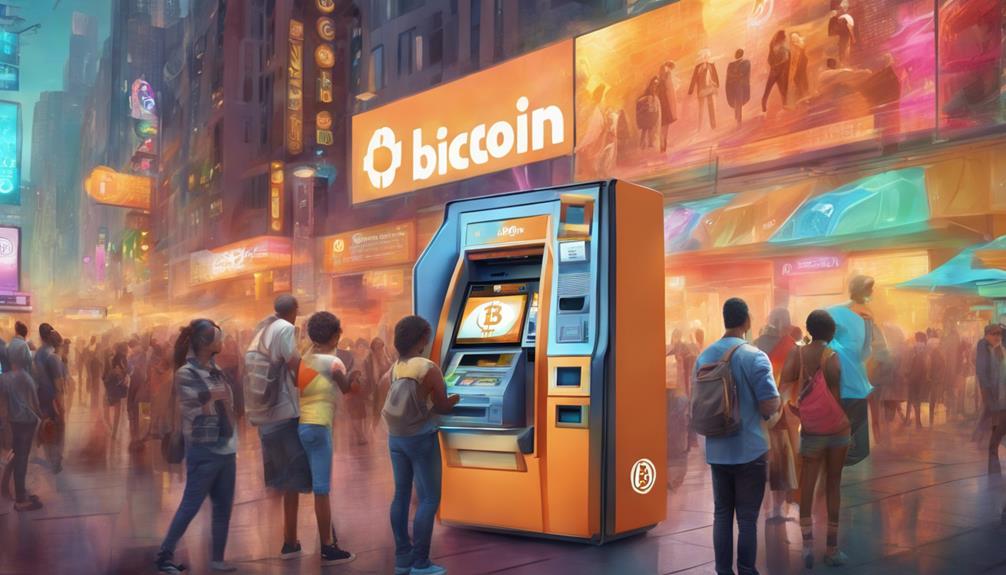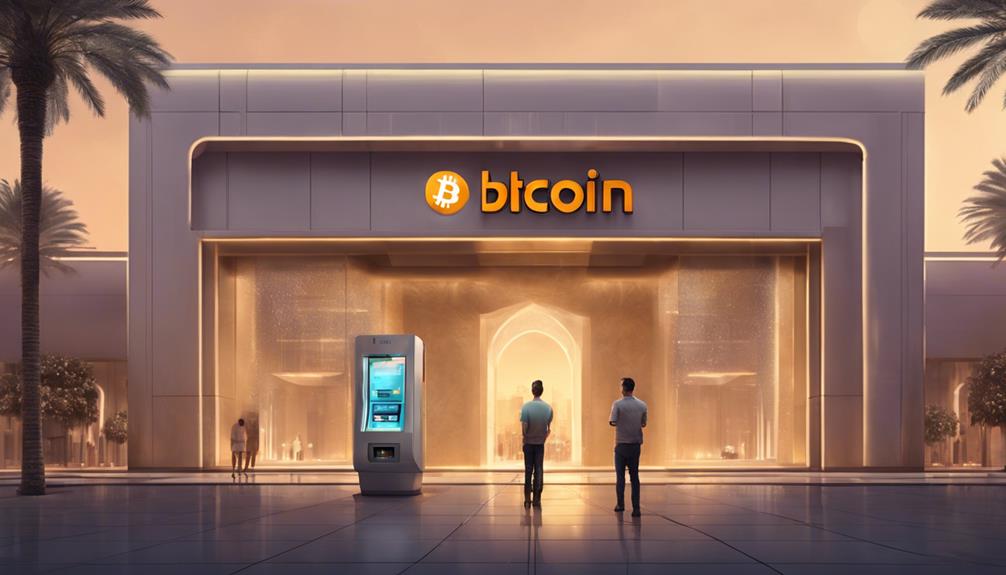Ethereum Vs Binance Smart Chain: Defi Showdown

As you explore the intensifying rivalry between Ethereum and Binance Smart Chain in the DeFi sector, you'll find that your understanding of blockchain technology's impact on finance deepens. Each platform offers distinct advantages: Ethereum has its unmatched security and extensive developer community, while Binance Smart Chain attracts with its high-speed transactions and lower fees. This competition not only sharpens each platform's features but also shapes the future landscape of decentralized finance. Consider how these differences might influence your investment strategies or project developments as the battle for DeFi dominance continues. What side of the fence do you find yourself on?
Origins and Development

Ethereum, the brainchild of Vitalik Buterin, launched in 2015 as the first blockchain platform to enable smart contracts and decentralized applications (dApps). It was designed to be a global, open-source platform for custom assets and new kinds of economic applications. This innovation opened up a whole new realm of possibilities you can explore, from creating your own cryptocurrency to deploying cutting-edge business solutions.
As you dive deeper into Ethereum's history, you'll see it wasn't just about technology. The launch represented a significant shift in how we perceive digital ownership and collaboration. Its initial development phase, fueled by a crowd-funded presale of Ether (ETH), Ethereum's native cryptocurrency, demonstrated a strong community support and belief in decentralization.
Fast forward to today, and Ethereum has grown beyond just a platform for dApps. It has become a foundational blockchain that supports a vast ecosystem, including finance, gaming, and collectibles. This growth was spurred by continuous improvements and updates by a dedicated global community of developers striving to enhance its capabilities and efficiency.
Understanding Ethereum's origins and development gives you a deeper appreciation of its role in shaping the digital economy.
Next, you'll need to explore its network security to fully grasp how Ethereum maintains its robust system.
Network Security Analysis
Over the years, network security has become a paramount concern for any blockchain technology, and understanding how this applies to Ethereum is crucial for your peace of mind. You'll find that Ethereum's security model is deeply anchored in its decentralized nature. Being one of the largest and most established blockchains, it leverages a proof-of-work (PoW) mechanism which, while energy-intensive, offers robust protection against attacks such as double spending and network forks.
On the other hand, Binance Smart Chain (BSC) employs a proof-of-stake authority (PoSA) consensus that combines elements of proof-of-stake (PoS) and delegated proof-of-stake (DPoS). This allows for a smaller group of validators, which can lead to faster transactions but also increases the risk of centralization. Centralization could potentially make BSC more susceptible to security breaches, as fewer nodes need to be compromised to impact the network negatively.
While Ethereum is transitioning to a proof-of-stake (PoS) with its Ethereum 2.0 upgrade, aiming to maintain security while reducing energy consumption, BSC's existing model already benefits from high transaction throughput. However, you should consider how the fundamental differences in network security could affect your assets and interactions on these platforms.
Transaction Speed and Costs

When comparing Ethereum and Binance Smart Chain, you'll notice significant differences in transaction speeds and associated costs. Ethereum, often the more congested network, tends to have slower transaction times, especially during peak usage. You might experience delays as transactions queue up, awaiting confirmation. This slowdown can be a drawback if you're looking for quick transaction finality.
On the cost side, Ethereum's fees, also known as gas fees, can fluctuate dramatically. During high demand, these fees can become prohibitively expensive, which might deter you from executing transactions, especially smaller ones where the fee might exceed the transaction value itself.
In contrast, Binance Smart Chain (BSC) offers you a much faster experience with its higher transaction throughput. This efficiency is achieved through a different consensus mechanism, which allows for quicker block times. You'll generally find that transactions on BSC are confirmed within seconds, a stark contrast to potential minute-long waits on Ethereum.
Moreover, BSC's transaction costs are typically lower than those on Ethereum. This cost-effectiveness is due to the network's design and governance aimed at maintaining minimal transaction fees. This makes BSC an appealing option if you're cost-sensitive or engage in high-volume trading.
Ecosystem and Partnerships
A robust ecosystem and strategic partnerships are crucial for any blockchain platform's success. You'll find that Ethereum and Binance Smart Chain (BSC) both excel, but in notably different ways.
Ethereum, the older of the two, boasts a vast and diverse ecosystem with thousands of decentralized applications (DApps). Its longstanding presence has nurtured relationships with heavy hitters like Microsoft and JPMorgan, enhancing its credibility and stability.
On the other hand, BSC has rapidly built a compelling ecosystem by focusing on scalability and low transaction costs, which attract developers and users alike. Binance, with its extensive resources and influence, has successfully forged significant partnerships that foster integration and ease of use. This includes collaborations with blockchain networks like Chainlink for reliable data feeds and Ankr to improve Web3 infrastructure.
Both platforms actively engage in community initiatives and developer support programs to widen their reach and solidify their ecosystems. Ethereum runs various grant programs to support up-and-coming projects, while BSC offers the Most Valuable Builder program to accelerate project development.
Understanding these ecosystems and their partnerships, you're better equipped to navigate their offerings and decide where your loyalty or interest should lie, based on alignment with your needs and values.
Tokenomics and Governance

Delving into tokenomics and governance, it's essential to understand how these factors influence the overall functionality and user empowerment within Ethereum and Binance Smart Chain (BSC).
Ethereum's tokenomics revolve around its native token, Ether (ETH). You must pay transaction fees in ETH, which also serves as a reward for network validators. This setup not only secures the network but also stabilizes ETH's demand. Governance is decentralized; it's driven by community proposals and consensus, ensuring you have a say in the network's future if you hold ETH.
On the other hand, BSC uses Binance Coin (BNB) for transaction fees and validator rewards. BSC's governance structure is more centralized, with Binance maintaining significant control. This centralization can lead to faster decision-making, but it might worry you if decentralization is your priority.
Both platforms aim to balance user fees with network security and efficiency. Ethereum's upcoming shift to proof-of-stake in Ethereum 2.0 promises lower fees and greater scalability, potentially making it more attractive to you.
Meanwhile, BSC continues to leverage its association with Binance's ecosystem to offer a user-friendly experience with lower transaction costs, which might appeal if cost-effectiveness is your concern.
Future Trends and Predictions
Looking toward the future, Ethereum and Binance Smart Chain are poised for significant transformations that could reshape the DeFi landscape.
You'll see Ethereum's ongoing upgrades, particularly the move to Ethereum 2.0, enhance its scalability and reduce gas fees, potentially attracting more users and developers. This shift aims to solidify its position as the leading platform for decentralized applications.
On the other hand, Binance Smart Chain might capitalize on its already established high transaction speed and low costs to draw projects that prioritize performance and affordability. However, it'll need to bolster its security measures and decentralization to maintain trust and competitiveness.
You should also watch how both platforms navigate regulatory changes. Increasing scrutiny from governments could either stifle growth or stabilize the market, depending on the adaptability of these blockchains.
Additionally, the integration of more real-world assets through tokenization on both platforms could bridge DeFi with traditional finance, broadening the ecosystem's appeal.
Lastly, the rivalry might spur innovations like enhanced interoperability features, making it easier for you to move assets across different blockchains. This could open up a plethora of opportunities in the DeFi space, making it more accessible and efficient for users like you.
Conclusion
As you've seen, both Ethereum and Binance Smart Chain offer unique strengths for DeFi. Ethereum provides a well-established platform with high security, while Binance Smart Chain brings affordability and speed to the table. Your choice depends on your specific needs—whether it's the robustness and extensive ecosystem of Ethereum or the efficiency and cost-effectiveness of Binance Smart Chain. Moving forward, keep an eye on how these platforms evolve to stay ahead in the fast-paced world of DeFi.





